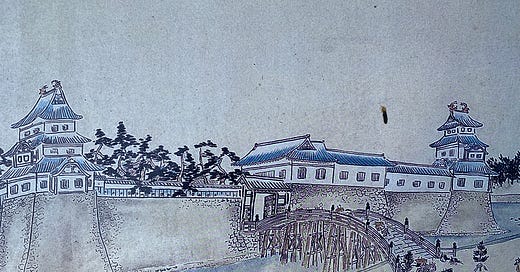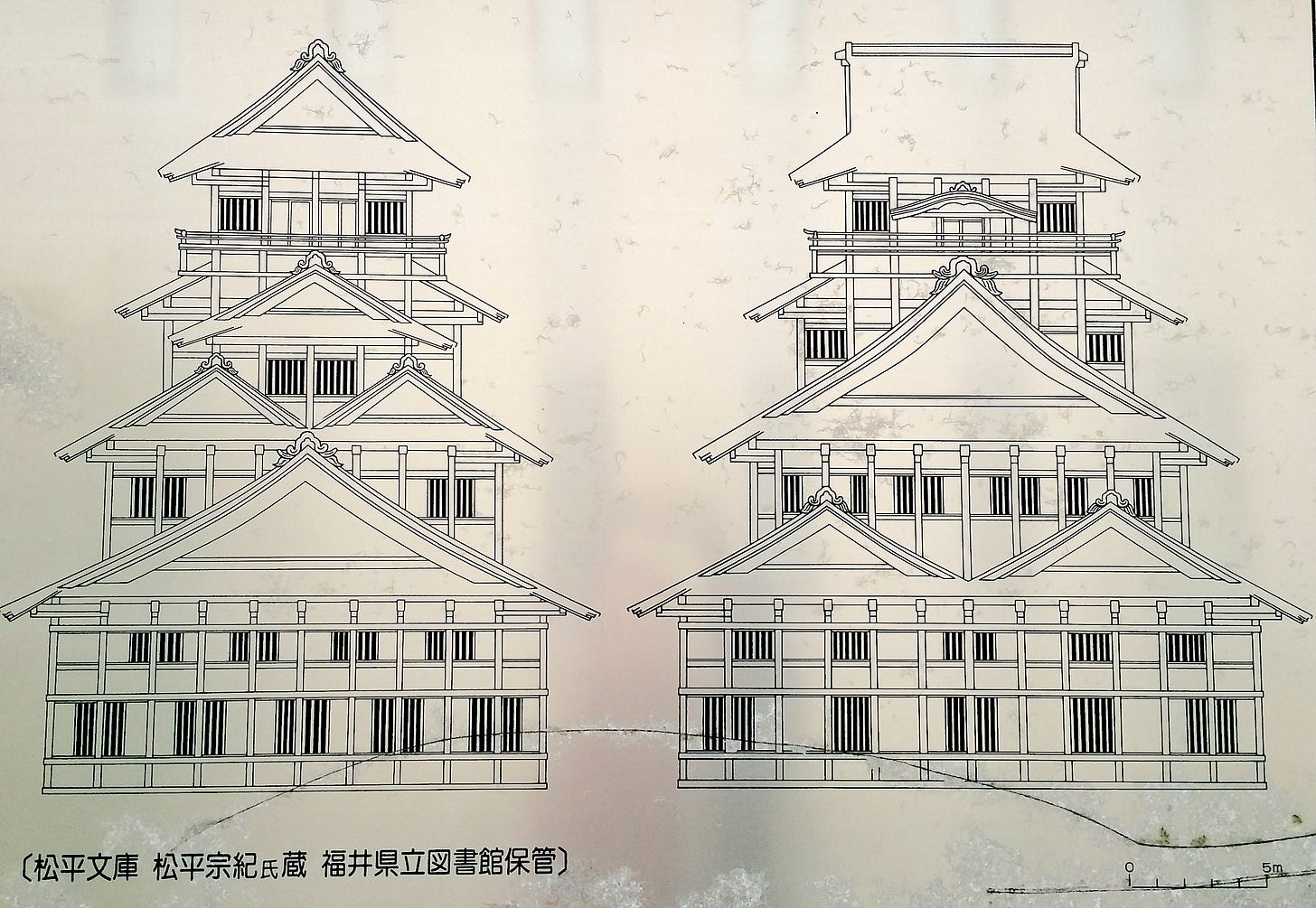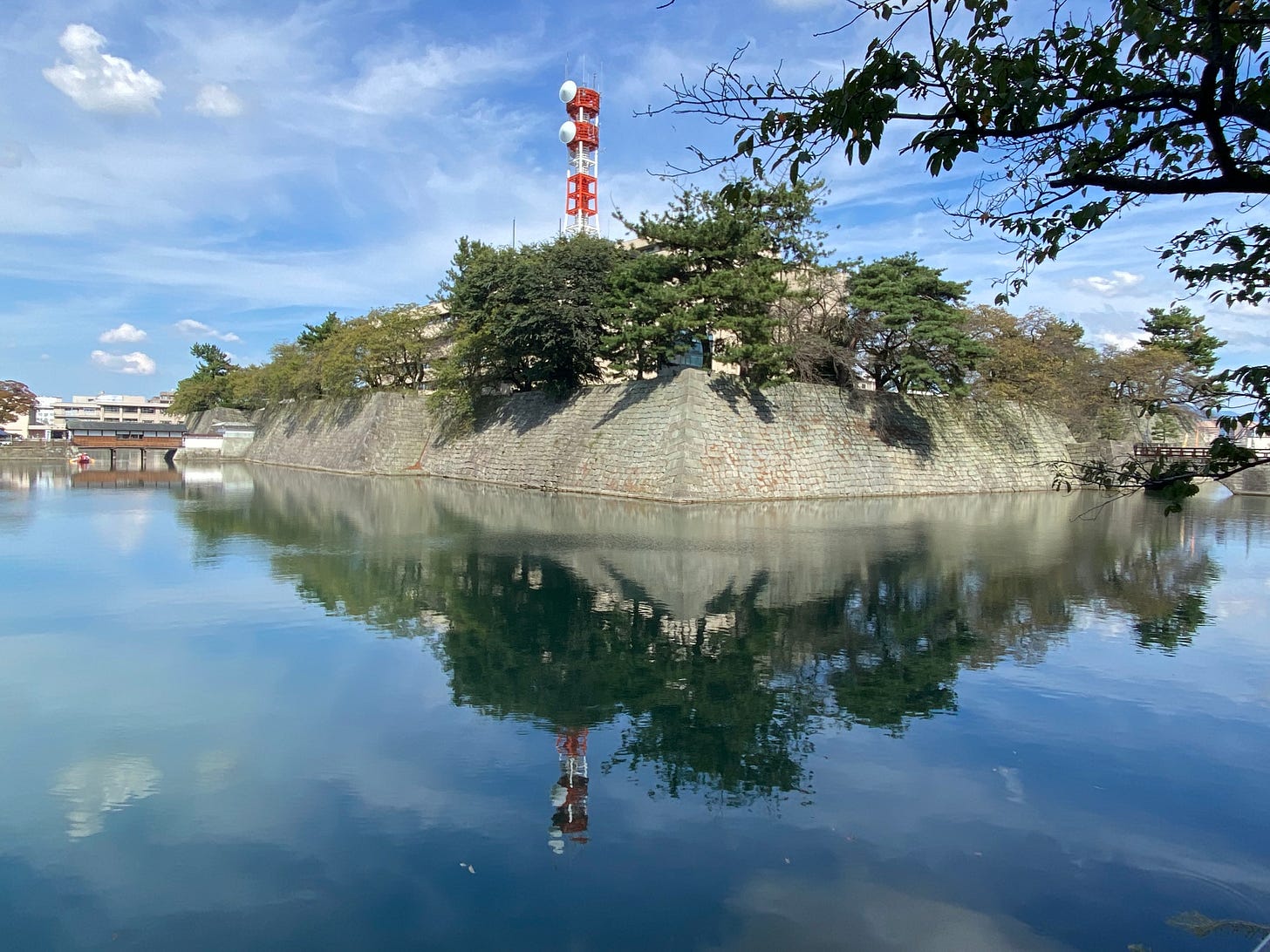Breaking news! Fukui Castle's Hitsuji-saru Yagura is to be restored!
Fukui Castle is a flatland-style kinsei, early modern period samurai castle located in Fukui City, Fukui Prefecture, and was constructed from 1601. Originally known as Kitanosho Castle after an earlier castle built by Shibata Katsuie, it was renamed Fukui by the third daimyo, Matsudaira Tadamasa in 1624. Kitanosho became Fukui as the character "kita" (northern) was associated with "defeat" and was considered unlucky, particularly after Shibata Katsuie’s defeat and so it was renamed Fukui, after a well called Fukunoi, literally the Well of Fortune, which still remains within the castle grounds.

History of Fukui Castle
Following the Siege of the Azai clan’s Ichijodani Castle In 1573, Oda Nobunaga awarded his trusted general Shibata Katsuie Echizen Province. Shibata built his Kitanosho Castle with its huge nine-story high tenshu keep at the fork of the Ashimori and Yoshiko River in 1575. This castle only stood for eight years, and so few records about it remain. The surrounding castle town laid out by Shibata Katsuie became the basis of modern Fukui City. After his defeat in the 1583 Battle of Shizugatake against Toyotomi Hideyoshi, Shibata withdrew to Kitanosho Castle, and committing seppuku, burned the castle down.
Following the Battle of Sekigahara, Tokugawa Ieyasu awarded Echizen Province to his second (and illegitimate) son, Yuki Hideyasu, with 680,000 koku for having been the most meritorious warlord in the Battle of Sekigahara in October of 1600. Yuki began constructing a new castle in early 1601 on a site 700 meters north of the ruins of Shibata’s Kitanosho Castle. Many of Kitanosho’s stone walls were reused in its construction. It took about six years to complete the castle, with the help (help being read as “forced labor”) of daimyo from all over the country, so that it would be a castle worthy of the clan’s residence in both name and reality. The completed castle covered an area of around 2 km square, from Shinborikawa (present-day Arakawa) to the east, Asuwagawa to the south, and the Kagaguchi Umadashi district to the north.

Tenshu Keep
A four-tiered, five-story tower keep was built on the northwest corner of Fukui’s main enclosure. The height, including the stone tenshu base, was about 37 meters. The exterior walls were finished with white plaster, and the top floor had a mawarien balustrade around the outer perimeter and a gabled roof on the west side, arranged in a manner similar to that of the original Osaka Castle Tenshu.
After the main keep burned down in 1669, the two-story Tatsumi Tower in the southwest corner of the main enclosure, which had also burned down, was rebuilt, but larger, with three stories and was used as a substitute for the Tenshu. Old photographs show that it was a compound watchtower-type structure with windows above and below on the first and second floors , so it is believed to have been a three-tiered, internally five floor tower.

As a result of six excavations conducted since 1993, stones believed to be remains of the former castle’s stone walls were unearthed below Shibata Shrine, the presumed location of the original Shibata built Kitanosho Castle’s main citadel, but the exact location of this main citadel is yet to be completely identified. After Fukui’s castle tower caught fire and burned down in 1669 it was never rebuilt due to the domain's worsening finances and consideration for the shogunate. There is also a theory that the shogunate did not grant permission for reconstruction.
Tokugawa Ieyasu is said to have designed the castle’s layout himself, but from the looks of the plans may well have received assistance and advice from his close friend and castle design and construction expert, Todo Takatora.
Following Yuki Hideyasu, who was later granted use of the Matsudaira clan name, 17 generations of Matsudaira ruled for 267 years until the end of the Edo period.
In 1871, during the Meiji period, all remaining structures except for the Honmaru Goten palace were demolished and three of the four surrounding separate water moats were filled in. Most of Fukui Castle was destroyed, and the land reclaimed except for the inner moats and the Honmaru central citadel’s stone walls and ramparts. The Fukui Prefectural government offices, prefectural police headquarters and other public buildings were constructed within the grounds of the castle’s central Honmaru enclosure. In 1945, the Honmaru Goten palace was destroyed during World War II air raids, however, part of the Honmaru Palace had been relocated to the main hall and shoin of Zuigen-ji Temple in Fukui City, where it remains.
Reconstruction Efforts
In 2008, the Oroaka-bashi Bridge, a covered wooden bridge with a roof and walls was authentically reconstructed. In 2017, the Fukunoi well’s stonework and well frame were restored to original size before being damaged in the Fukui earthquake. A new well roof and a bucket were also installed. The following year the Yamazatoguchi Gomon gate was restored. It is a rare in that it had a stone tiled roof.
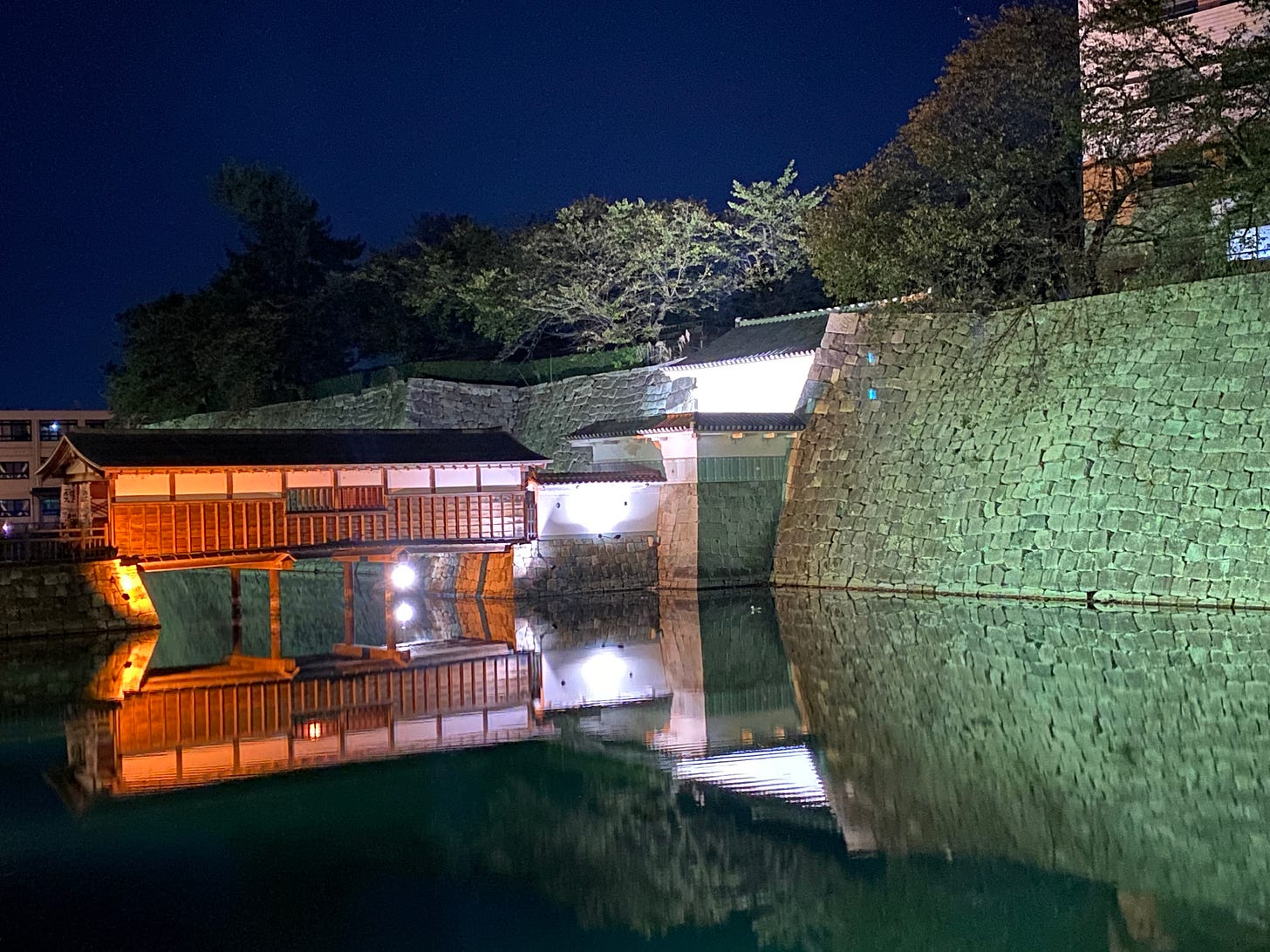

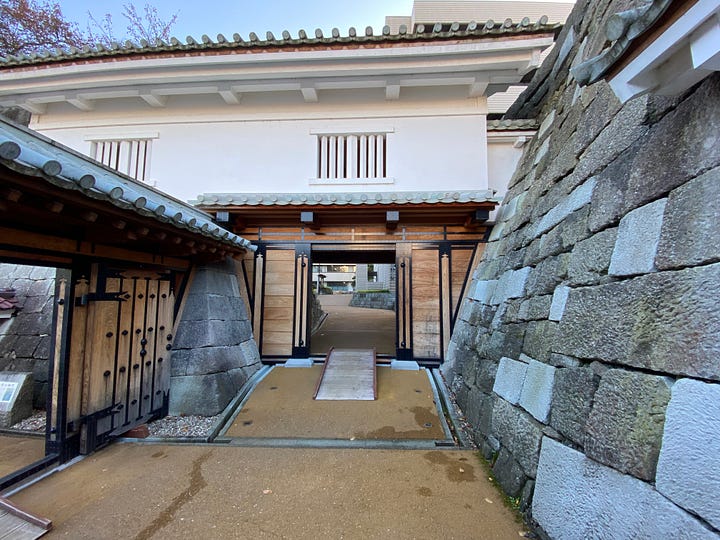
Breaking News
The Hitsuji-saru yagura, located in the southwestern corner of Fukui Castle, was a 16-meter-tall, three-story wooden turret structure that had been the de facto keep and the symbol of the castle since the five story tenshu was lost in 1669. It was larger than Maruoka Castle’s tenshu keep in Sakai City, and when restored, will be visible from Fukui Station, and is expected to attract tourists.
Restoration work on Fukui Castle’s Hitsuji-saru-yagura has begun. Final surveying was carried out yesterday (July 3,, 2025) in preparation for filling in the moat to install heavy machinery and scaffolding, and the depth of the moat was again measured to confirm how much soil will be required.
First, the moat water will be drained with a pump and the moats fish and other creatures will be moved. The stone walls will be reinforced and then the moat will be filled in by mid-January next year to allow for construction work. The project will cost 4 billion yen and is expected to be completed in fiscal year 2029.
If the reaction to recent reconstruction work at other castles across the nation is anything to go by, the increase in tourism generated by the completion of this watchtower will soon cover, and make returns, on Fukui city’s investment.

